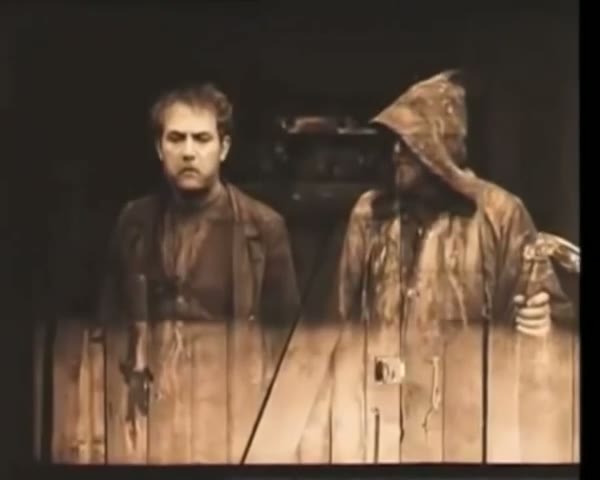Regie:
Victor SjöströmDrehbuch:
Victor SjöströmKamera:
Julius JaenzonBesetzung:
Victor Sjöström, Hilda Borgström, Tore Svennberg, Astrid Holm, Concordia Selander, Lisa Lundholm, Tor Weijden, Einar Axelsson, Olof Ås, Nils Arehn (mehr)Inhalte(1)
Victor Sjöströms Film basiert auf einer Erzählung Selma Lagerlöfs, die sich wiederum auf eine uralte schwedische Legende beruft. Sie erzählt vom Fuhrmann des Todes, der als letzter Verstorbener ein Jahr lang die Seelen der Toten einsammeln muss. Sjöström übernimmt die Motive der Legende und projiziert diese auf das schwedische Arbeitermilieu seiner Zeit. “Der Fuhrmann Des Todes” gilt als sein Meisterwerk. Die kunstvolle Lichtsetzung, die raffinierte Kameraarbeit, die Technik der Doppelbelichtung, eine ambitionierte Montage sowie eine komplexe Erzählstruktur ließen den Film zur Krönung des “Goldenen Zeitalters” des schwedischen Stummfilms werden. Mit viragierter, restaurierter Abtastung und der Musik von Elena Kats-Chemin für ein Kammermusikensemble. (Verleiher-Text)
(mehr)Kritiken (3)
Das Werk von Selma Lagerlöf, der Literaturnobelpreisträgerin, ist in dem Film wirklich oft anzutreffen. Bis zum Ende der goldenen Ära waren Victor Sjöström und Mauritz Stiller die bekanntesten Verfilmer ihrer Werke. Sjöström war gleichzeitig ihr Entdecker für das Medium Film und spielte oft in ihren Geschichten die Hauptrolle. Und obwohl ich Stillers konkurrierende Projekte Herrn Arnes Schatz und Gösta Berling viel lieber mag, kann man Der Fuhrmann des Todes natürlich nicht ignorieren. Ein suggestiver, moderner Film, der es schafft, den Zuschauer mitzureißen und ihm einen Herzinfarkt durch intensiveren Schrecken zu bescheren als jeder heutige Trash. Es geht um die Atmosphäre und die Faszination, die von der Entstehungsgeschichte einer der ersten menschlichen Ängste ausgeht.
()
In terms of atmosphere, visual effects and its very groundbreaking story structure, there is nothing to fault considering the year this film came out. The chilling story full of mystical and fantastical images is told in a very original way and, together with its very depressing premise, it manages to keep our full attention, although the monotonous (but not unsuccessful) music starts to put us to sleep after a while and a few scenes have no narrative value at all – the line of the remembrance of the hero's evil deeds, in particular, lacks the poetry and imagination of the rest of the film. Nevertheless, this is an important work of cinema, making great use of minimalist means to evoke very strong emotional and thought experiences. Plus, I finally saw where the axe breaking through a door first appeared in cinema – a familiar scene from the cult classic The Shining... :)) 80%
()
I am struggling to understand how it is possible that this film did not appear in the publication "101 Horrors You Must See Before You Die". It absolutely deserves a place here, because the atmosphere presented is truly unbelievably dark. It is the ancestor of dark horror films and can easily shine alongside such pieces as "The Cabinet of Dr. Caligari" or "Nosferatu the Vampire". I am glad that I still learned about this film and that I had the chance to watch those beautiful shots, because the double exposure has never been more perfect. The rising of the soul from the body, while the body still lies there, just looks perfect. The interesting storytelling style - retrospective with deeper retrospection - only confirms the significance and uniqueness of this Swedish masterpiece.
()

